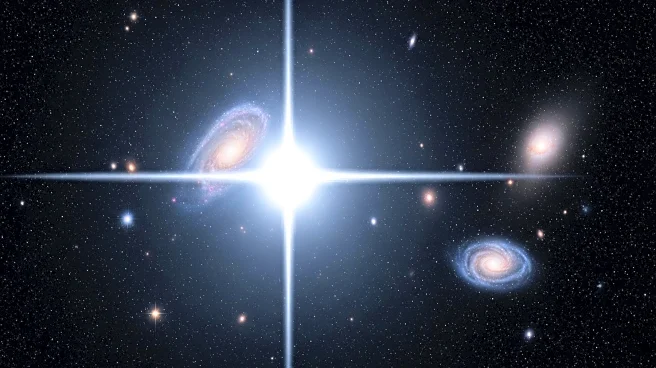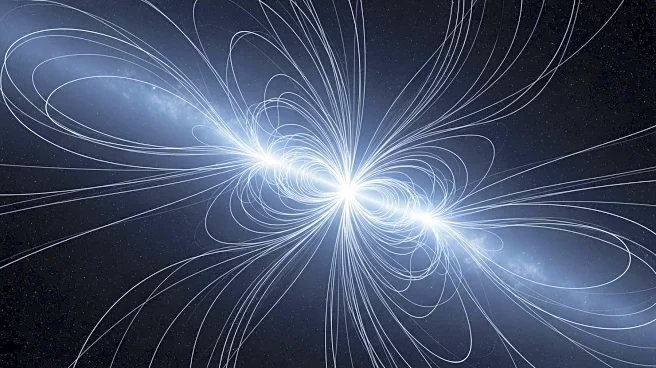What is the story about?
What's Happening?
Astronomers at Goethe University Frankfurt have made a significant breakthrough in understanding how supermassive black holes, such as M87*, unleash their power. Using advanced simulations, the researchers discovered that magnetic reconnection, alongside magnetic fields, plays a crucial role in extracting energy from spinning black holes to launch jets of matter. These jets, moving at nearly light speed, extend thousands of light-years and influence the evolution of galaxies. The study focused on M87*, a black hole six and a half billion times the mass of the Sun, located at the center of the Virgo constellation. The research team developed a computational tool called the Frankfurt particle-in-cell code for black hole spacetimes (FPIC) to simulate the behavior of charged particles and electromagnetic fields near the black hole. Their findings suggest that magnetic reconnection contributes to the formation of energetic plasma chains, which power extreme astrophysical phenomena.
Why It's Important?
This discovery has profound implications for astrophysics, as it challenges the long-standing Blandford–Znajek mechanism, which was thought to solely explain how black holes extract rotational energy. By identifying magnetic reconnection as a contributing factor, the research opens new avenues for understanding the dynamics of relativistic plasmas in curved spacetimes. The ability to simulate these processes with precision allows scientists to better comprehend the extreme luminosities of active galactic nuclei and the acceleration of particles to near-light speeds. This advancement not only enhances our knowledge of black hole physics but also aids in explaining the growth and evolution of galaxies, impacting the broader field of cosmology.
What's Next?
The research team plans to continue refining their simulations to explore other potential mechanisms that may contribute to energy extraction from black holes. Further studies could lead to a more comprehensive understanding of the interplay between gravitational and magnetic fields in these extreme environments. Additionally, the findings may prompt other astrophysical research groups to investigate similar processes in different cosmic settings, potentially leading to new discoveries about the universe's most powerful engines.
Beyond the Headlines
The implications of this research extend beyond astrophysics, touching on fundamental questions about the nature of energy and matter in the universe. The study of black holes and their jets could provide insights into the origins of cosmic rays and the distribution of matter across galaxies. Moreover, the computational techniques developed for this research may be applicable to other fields requiring complex simulations, such as climate modeling or nuclear physics.
AI Generated Content
Do you find this article useful?













